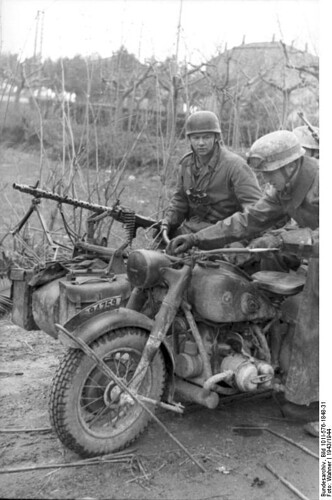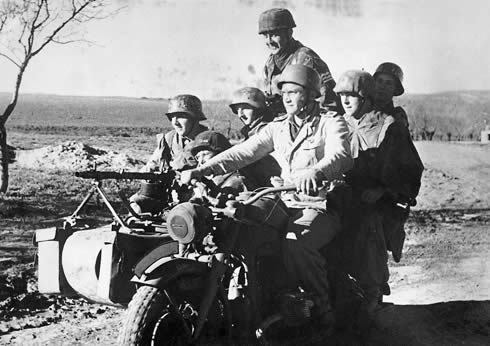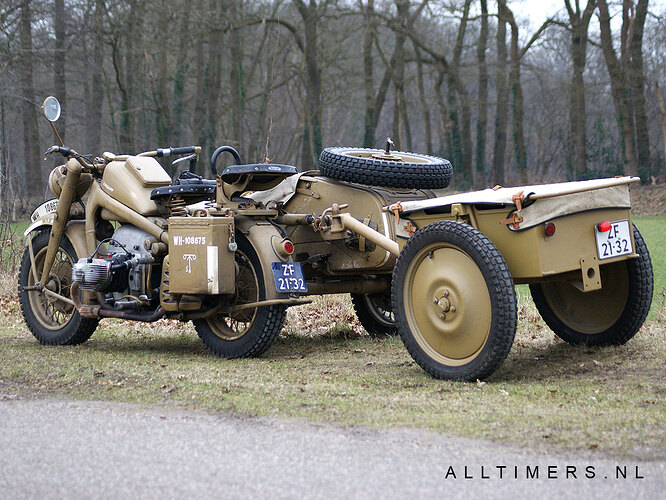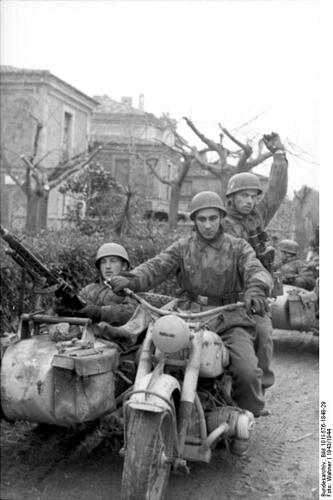Early in the war, the German army discovered the practicality of using motorcycles for reconnaissance. Military motorcycles came in three classes. Light-350cc or less, medium-500cc and lower, heavy- 500cc and higher. Sidecars were soon added and became a popular innovation. The BMW R75 was a heavy class of motorcycle used extensively by German recon units. The R75 was designed as a battlefield motorcycle and therefore special attention was given to make sure it would be a reliable and sturdy machine. The R75 was powered by a two cylinder, air cooled, horizontally opposed, 4 stroke engine of 746cc. The R75 officially entered the service in 1941. The sidecar had a machine gun mount suitable for the MG34, a spare tire, a heater for both hands and feet ( helpful on the Russian Front  ) and removable storage bags for use when needed. The bike itself had a headlight for night use, a 24 liter gas tank, and had a top speed of 57 mph. In addition, the sidecar was fully powered, the third wheel was driven with an axle connected to the rear wheel of the motorcycle. These were fitted with a locking differential with selectable road and off-road gear ratios. The transmission had four forward and one reverse gear. Total number of units produced was 16,510. There was a target number of 20,200, but that was not attained due to the Eisenach Factory being knocked out of commission in 1944 by Allied bombing.
) and removable storage bags for use when needed. The bike itself had a headlight for night use, a 24 liter gas tank, and had a top speed of 57 mph. In addition, the sidecar was fully powered, the third wheel was driven with an axle connected to the rear wheel of the motorcycle. These were fitted with a locking differential with selectable road and off-road gear ratios. The transmission had four forward and one reverse gear. Total number of units produced was 16,510. There was a target number of 20,200, but that was not attained due to the Eisenach Factory being knocked out of commission in 1944 by Allied bombing.
Along with the Zundapp KS 750, the R75 served with distinction in North Africa as well as on the Eastern Front. In August of '42, at the request of the Army, BMW and Zundapp agreed upon the standardization of parts with the plan of eventually creating a hybrid of the two, to be classified as the BW 43 which would consist of a BMW sidecar affixed to a Zundapp KS 750.
Paratroops with a BMW R75




